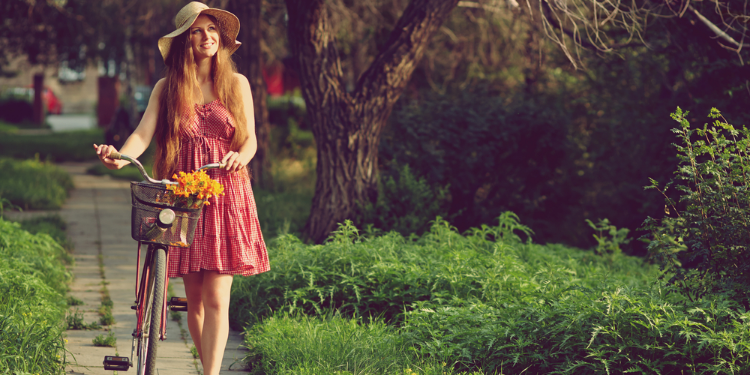
Once you have settled abroad, whether alone or with your family, you might find yourself wondering how to spend your time. Is there a better feeling that reconnecting with nature to become a mindful expat and, at the same time, rid yourself of the stress that comes with moving? To help you discover and enjoy your host country's natural wealth, here is an overview of the world's greenest cities, including parks, gardens, woods, and forests, according to TravelBird Index 2018.
Reykjavík – Iceland

Reykjavik may not be an obvious choice when considering moving abroad, but it's worth taking into account its abundant nature. Iceland's capital city can boast of having 410.84 m² of green space per inhabitant. Located in the south-west, Reykjavik offers breathtaking scenery with snow-capped mountain peaks, geysers, azure lakes, and old volcanoes. Those who like hiking will enjoy many waterfalls, rivers, and nature reserves including the Golden Circle, a must see! Reykjavik is also world famous for its geothermal springs, fjords, and lava fields. If you're looking for more adventure, Videy Islands are the ideal place for trekking and cycling. Nearer to the city centre, you can enjoy an afternoon at the park or in one of the city's gardens with your friends or family. Hljómskálagarður, for example, has a vast kids playground while Klambratún Park includes basketball, football, and frisbee courts. You also have the Reykjavik Family Park and Zoo in Laugardalur.
Auckland - New Zealand

New Zealand is world famous for its natural wealth which include native forests, national parks, mountain ranges, not to mention its beautiful beaches. What if we told you that you can still find all this in its capital city? Auckland can boast about its 357.20 m² of green space per inhabitant. Waitakere Ranges is a 250-kilometre-long regional park with walking and hiking amidst a lush forest with waterfalls, peaks and cliffs, and lined beautiful black sand beaches. It is definitely a must-see! Close by, Woodhill is a forest where you can go for a walk, cycling or a quad safari. Auckland also has many urban green spaces like Eden Garden, Albert Park, and One Tree Hill. Stretching over 20 hectares of land, Auckland's zoological park is home to 197 plant species and some 1,300 animal species.
Bratislava – Slovakia

Slovakia's capital city, Bratislava has some 332.99 m² of green space per inhabitant, including parks, woods, and forests. Located on the Danube River banks, the city holds a unique natural landscape where Bratislava Castle stands out with its beautiful green gardens. At Devin Castle, you will enjoy a long bike train surrounded by lush nature and the impressive Carpathian Mountains. Bratislava is, indeed, the ideal place for the outdoorsy expat with its beautiful castles, lakes, parks, and gardens where you can go hiking or relax. Founded in 1942, Bratislava's Botanical Gardens are part of the Comenius University but open to the public. The Forest Park, Grassalkovich Garden, and Sad Janka Kráľa which is one of Central Europe's oldest parks, are just some of the green spaces scattered all across the city. Wine lovers will be delighted to explore the Slovakian history, wine, and cuisine along the Small Carpathian Route.
Gothenburg – Sweden

Nature is omnipresent in Gothenburg as in the rest of the country. One of the largest cities in Sweden, Gothenburg has 313.87 m² of green space per inhabitant, not to mention its beautiful canals crossing the city centre. Located in the south of the city, Göteborgs Botaniska Trädgård or Gothenburg Botanical Garden is not to be missed! It is, in fact, one of Europe's most famous botanical gardens, stretching over 175 hectares of land and home to more than 20,000 plant species. Slottsskogen Park, which is found in the southwest, offers breathtaking views of the entire city. In the east, the Delsjön Nature Reserve is home to two lakes and a valley surrounded by lush forest. The most adventurous can take advantage of their stay in Gothenburg to make a boat trip to the West Coast archipelago.
Sydney – Australia

Sydney is particularly famous for its amazing coastline and its lively harbour from which you can contemplate whales during the migration season. Also, did you know that Sydney is one of the world's greenest cities with 235.73 m² of green space per inhabitant? Home to some of Australia's most beautiful parks and gardens, the city is the ideal place for hiking, making a family picnic or just relaxing after a long working day. To discover the region's rich fauna and flora, you can choose from different national parks including the Royal National Park, founded in 1879, with its camping areas in the heart of a thick forest. Dharug National Park is listed as a World Heritage Site at the UNESCO. For hiking or cycling, turn to Lane Cove National Park or Thirlmere Lakes National Park which is found in the west of the city. At the Bondi to Coogee Coastal Walk, you will be able to admire a magnificent scenery, enjoy fishing or kayaking, and discover Aboriginal stone art.
Prague - Czech Republic

The Czech Republic's capital city, Prague can boast about 220.54 m² of green space per inhabitant. The city's incredible beauty has been attracting visitors in large numbers every year. A healthy and peaceful environment surrounded by mountains, forests, and caves make Prague a nice place to live in and enjoy the outdoors with your family. Mushroom picking, hiking, snowshoeing, and cross-country skiing are some of the locals' favourite hobbies you can also indulge in. In your free time, you can also explore Šumava and Krkonoše national parks which are famous for their unique flora and fauna in the heart of lakes, mountains and valleys. Closer to the city centre, numerous parks and gardens, including the Gothic Vrtba and the Prague Castle Gardens are awaiting you. The Franciscan Garden, for example, hosts a children's playground. Stromovka Park, for its part, regularly hosts fairs and exhibitions.



















